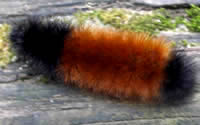| |
|||
|
Signs
of Spring:
Observations for
January |
|||
| Today's Reminder Includes:
|
|||
| The winter solstice has passed. As we move through winter and into spring, lots of clues will tell you the season is changing. What will they be? That's for you to discover! Each month, we'll remind you to go outside and observe. Look, smell, feel, and listen carefully. Also pay attention to the hours of sunlight. Changing sunlight is what leads to all other seasonal changes. Record your observations on one of these handouts: |
|
||
| Where Do Insects Go in the Winter? | |||
Ever wonder what happens to all the insects when the cold winter comes? Insects have a variety of ways for surviving winter’s cold weather. Migration is one strategy for escaping the killing cold. Some insects and spiders migrate a short distance into our houses, but others, like the monarch butterfly travel hundreds of miles. Most of the insects we see in the warmer months are still close by during the coldest weather. Insects live through the winter in all their life stages; as eggs, larvae, pupae and adults! Some find protection under heavy cover of leaves and snow. Others survive and grow under the ice in frozen ponds and streams. Some spend the winter wrapped warmly in their own pupae and cocoons. Did you know that some insects bodies replace the water in their bodies with another liquid that acts like antifreeze?! |
How does a woolly bear caterpillar cope with winter? Find out more. Try
This Research! |
||
|
|||
| Resources to Explore | |||
|
|||
| Signs
of Spring for February: A reminder will be posted on February 1, 2010 |
|||






